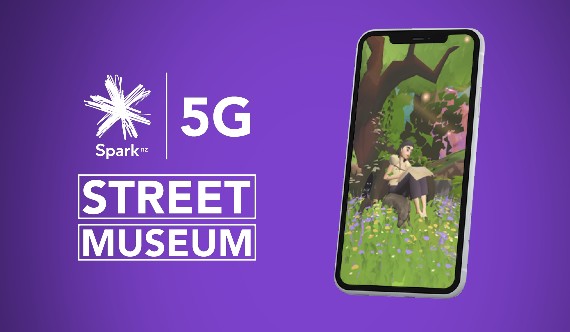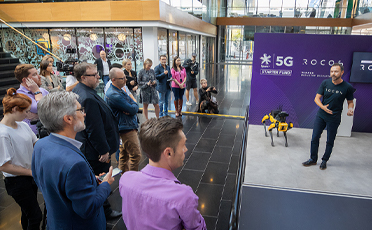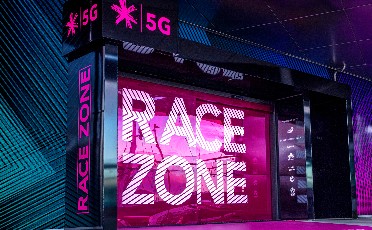Five mobile industry trends to watch in 2022.
The mobile industry has played a crucial role in society over the past two years, helping billions of people around the globe stay connected to friends, family, and colleagues. It has enabled us to successfully work from home as lockdowns and pandemic-related responses continued to disrupt our lives.
Spark’s focus was on protecting and enhancing its network to ensure a consistency of service around the suburbs of New Zealand where kiwi’s were working, home schooling, gaming, video streaming and confined to their homes. Our 5G rollouts continued at pace, new smartphones wowed consumers and businesses, and we diversified into new areas to meet demand for sophisticated collaboration and remote working technologies.
Read more about global 5G networks
5G will start to make an impact on the business world
In 2022, we will begin to see 5G making an impact in the business world as the technology matures and coverage improves. Spark will begin the introduction of Standalone 5G (SA 5G), which uses a virtual cloud-based core that allows data to be processed closer to the point of collection and enables features like edge computing and network slicing.
SA 5G offers guaranteed speeds, enhanced reliability, and ultra-low latency; features that will enable revolutionary business applications and deliver operational efficiencies via the Industrial Internet of Things (IoT), advanced robotics, and mixed reality (MR).
Spark is in a unique position to leverage our subsidiaries and our partners to provide an end-to-end enterprise digital solution for our customers. In 2022, we will explore the use of 5G for private networks, edge computing, and IoT services alongside many of our enterprise customers.
The march of the robot
Whilst robots have been around for more than 60 years, a quiet revolution is occurring in the area of artificial intelligence (AI) robotics. AI robots are empowered with sophisticated AI models and vision. They can see, learn, and react to make the right decision based on the current situation.
It’s likely you won't personally see the robots physically interacting with the things we use every day, but we believe there will be a day soon in which the majority of the items in our household were touched by a robot at least once before reaching us. In particular, the three key industries we anticipate to grow in New Zealand are warehouse pick and pack operations, recycling sortation, and crop harvesting and care. All areas that have been impacted by staff shortages.
Watch some videos from The Robots Brain podcast to find out more:
Peter Chen on building brains for robots in the real world
Matanya Horowitz shares how robots will change the world of recycling
Josh Lessing, CTO of AppHarvest
Spark has its own robot - the Clearpath Jackal. The Jackal is a small, fast, entry-level field robot. It has an onboard computer, GPS, multiple motion sensors and other featuresor out-of-the-box autonomous capability. If you haven’t already seen the Jackal in action, you can visit our Innovation Studio to see it complete an automated mission. Book a tour of the Spark Innovation Studio
Spark is also exploring how our mobile technology, computer vision, AI and Machine Learning and IoT can improve outcomes in the horticulture and viticulture industry. We’ll share more on this over the coming months.
Augmented and Virtual reality (XR) is a reality
Extended Reality (XR) technologies have matured over the past few years. Combining with 5G, AI and cloud, these technologies will allow businesses to redefine their engagement model which will bring about opportunities for new revenues and operational efficiencies.
Spark’s Innovation Lead, Joseph Wong, says artificial intelligence for machine vision is already in place, and we aim to further develop XR capabilities in 2022 working alongside our enterprise customers.
Cloud Gaming is Game on for 5G
Over the past couple of years, the gaming industry has grown rapidly and expected to reach $196 billion revenue in 2022. There are close to 3 billion gamers around the world and the average gamer is 34 years old.
In particular, mobile gaming is establishing itself as the most popular form of gaming, with over 2.6 billion players worldwide. 5G networks and cloud gaming services are becoming increasingly accessible on smartphones and tablets, and in turn, new opportunities to innovate and expand the gaming market are emerging.
With the high throughput and ultra-low latency of 5G, we’ve never been closer to truly immersive mobile experiences. Alongside cloud and mobile edge computing, gamers will finally be able to experience seamless Virtual Reality (VR), Augmented Reality (AR) and Extended Reality (XR) capabilities that are free from lag and cables.
COVID-19 pandemic to fuel wearables, wireless growth in 2022
With more time being spent at home during the pandemic, data shows an increase in the use of wearables like wireless headsets. Gartner figures show that spending on ear-worn devices more than doubled last year to $32.7 billion on the back of remote working as the need for quality audio experiences has become more important.
With more people turning to their smartwatch or fitness tracker to monitor exercise and sleep quality, it’s not surprising that fitness pros have identified wearable tech as the new top trend in fitness for 2022.
In addition, wearable data allows remote health providers to diagnose and monitor patients. They have also enabled the smooth continuation of managing clinical trial patients by enabling trial participants to provide their data without a face-to-face visit.
Wearables place patients at the centre of their health data-collection process. Continuous tracking of activity levels, sleep patterns, heart rate, or even body temperature could motivate patients to improve their health habits.
Spark 5G Street Museum
Featuring five immersive exhibits, bringing to life the unseen stories of some of New Zealand’s most iconic creatives.
5G now live across new locations
Earlier this year Spark announced that it will invest an additional $35 million to accelerate our 5G rollout, boosting total mobile connectivity investment to $125 million in FY22, and delivering 5G coverage to approximately 90% of the population by the end of calendar year 2023.
5G global trends: smart logistics
Spark’s Innovation Lead Joseph Wong shares his insights on Smart Ports.
5G global trends: cloud gaming
5G is set to make cloud gaming as seamless as streaming a movie. Find out how the convergence of 5G and cloud gaming may change the landscape for gamers.
5G available now in Napier & Hastings
Spark has announced that 5G is now available in Napier and Hastings.
Immersive Experiences
5G promises a whole new world of media experiences. The scope of what’s possible is about to explode.
5G available now for Connected Mobility Solution
As the deployment of 5G mobile coverage increases around New Zealand, Spart IoT connectivity solutions has now enable support for 5G capabilities.
Five mobile industry trends to watch in 2022
In 2022, we will begin to see 5G making an impact in the business world as the technology matures and coverage improves.
Next Gen Health
See how real-world examples of how 5G technology can transform the health system.
Accelerating the 5G rollout
Spark has announced that it will invest an additional $35 million to accelerate its 5G rollout.
Industry Disruptors
5G is set to change the way businesses operate in a fully connected world. Learn more about how 5G will optimise industry.
A sustainable future for NZ
5G isn't just good for business. It's potentially good for all of us. We've barely begun to explore the ways New Zealand can benefit from 5G adoption.
Ground robotics in action
The practical application of autonomous robots is quickly shaking up industries around the world - creating new ways of working. Join David Inggs, CEO and Co-founder of Rocos, as part of this month’s Spotlight Series on Automation.
Exploring 5G technologies with Joshua Ness
Heading up the Verizon 5G Lab in New York, Joshua works with local innovators to explore the boundaries of 5G technology, co-create new applications and rethink what’s possible in a 5G world. He covers everything from the history of wireless connectivity, a 101 on the key 5G properties, right through to what a 5G future will look like.
Exploring 5G technologies with Marcus Weldon
Marcus Weldon, former CTO of Nokia and President of Nokia Bell Labs discusses how 5G could bring about the 4th industrial revolution, and in this webinar he will explain why. The session highlights the potential 5G opportunities that will create the most value for your business.
5G Starter Fund
Spark went on a nationwide search to find New Zealand’s most innovative 5G ideas. We then committed to supporting the winning, leading-edge Kiwi businesses in bringing these solutions to life through the 5G Starter Fund.
5G Race Zone
The Spark 5G Race Zone was a free, all ages showcase of the amazing tech that Emirates Team New Zealand use to make the boat go faster.

















